In this blog, read all you need to know about the SBI, its functions, history, logo, and everything you need to know about the State Bank of India!
SBI: An Introduction
You all must have witnessed the 69th founding year of SBI recently. The State Bank of India or the SBI is a public-sector bank and financial service statutory body. It is the largest commercial bank in India in terms of assets, profits, deposits, number of branches, and employees. The SBI came into existence on July 1, 1955. It has its headquarters in Mumbai, Maharashtra. At least one family member in the Indian household holds a savings bank account in the SBI. The prominence and trustworthiness of SBI among common people are proof of the legacy it holds during these 68 years.
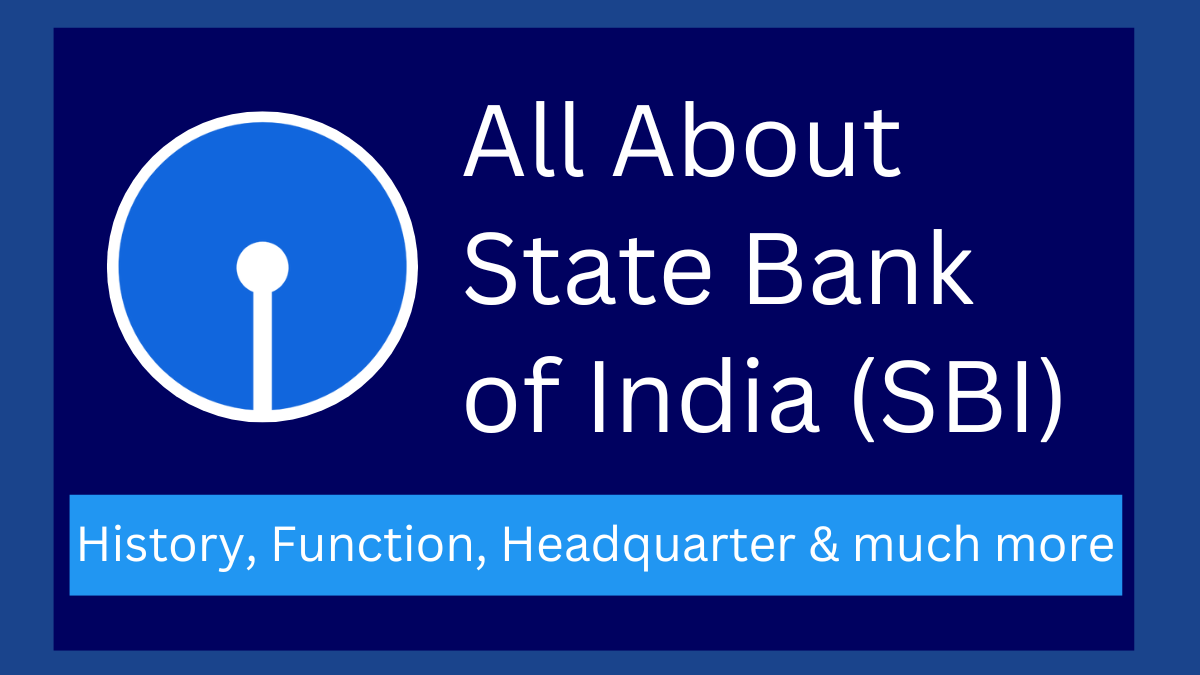
In this blog, we are going to talk about everything you should know about the SBI. In other words, this blog is going to be an introductory guide about the State Bank of India for you.
The bank became the banker to all classes of people through its wide expansion of business and has maximum outreach. This is why RBI put SBI on the list of Domestic Systemically Important Banks or D-SIBs (D-SIBs are banks that are too big to fail). Presently SBI is headed by Mr. Dinesh Kumar Khara. The Slogan of SBI is “Pure Banking, Nothing Else”.
Now let’s dive into the journey of 68 years of the oldest Bank of India, from where it all started, and the major events that made it ‘The State Bank of India”.
State Bank of India: Quick Overview
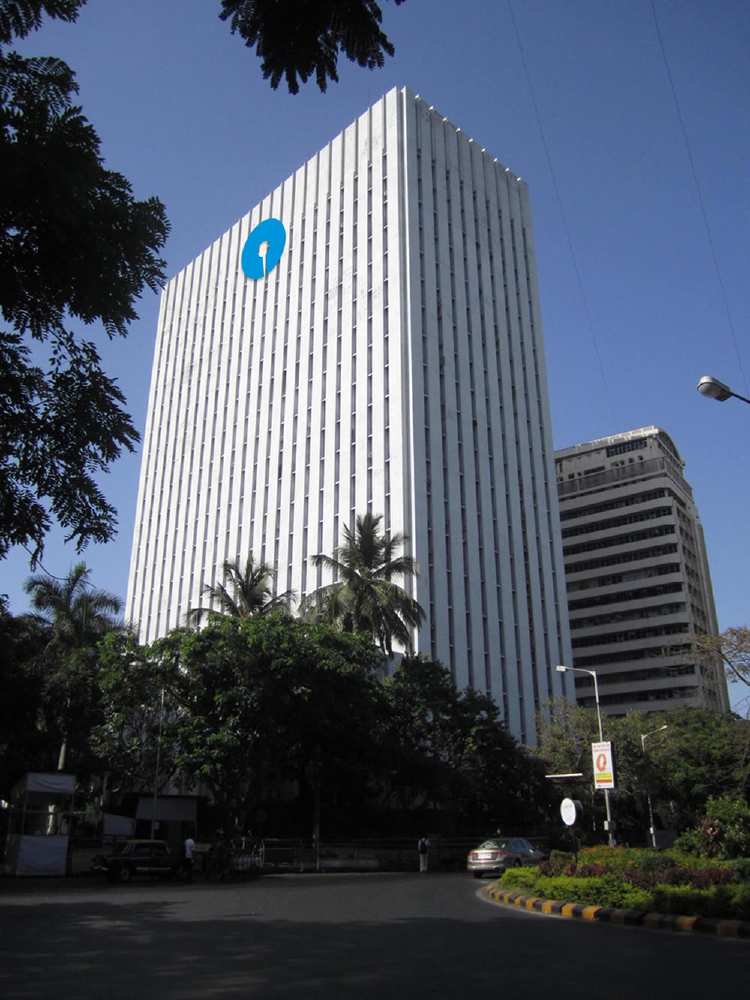
Let us quickly go over the details of the SBI before we learn more about the SBI and its functions.
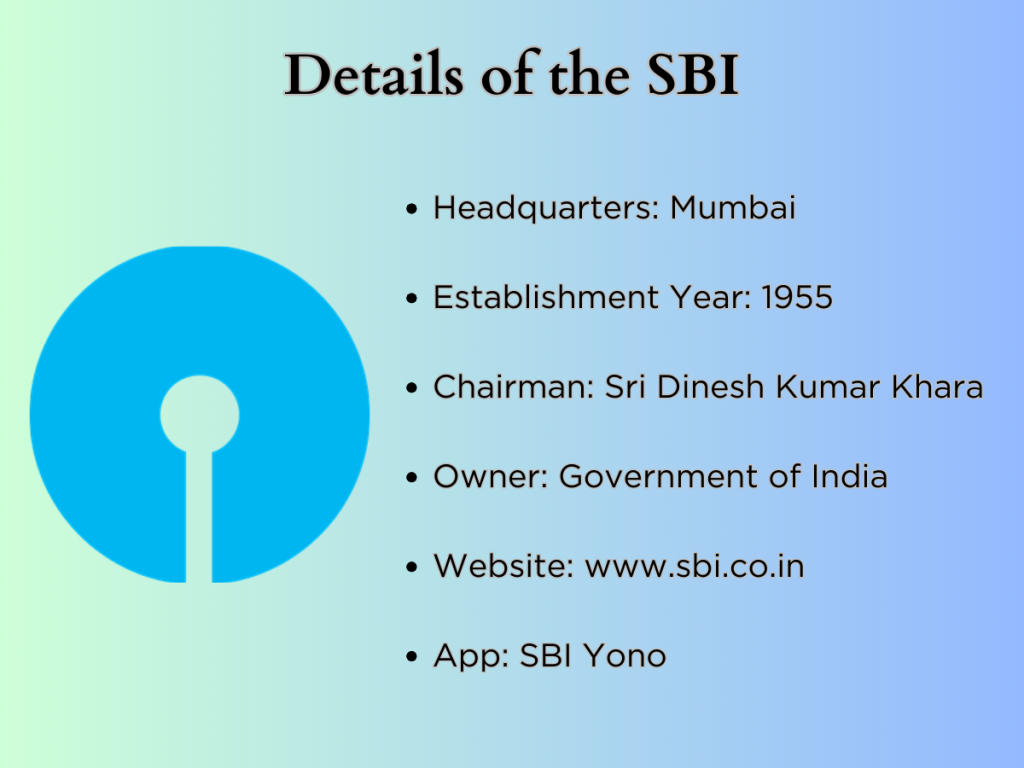
History of SBI Bank: A Timeline
1806
The roots of the State Bank of India lie in the 19th century when the Bank of Calcutta (later renamed as Bank of Bengal) was established on June 2, 1806.
1861
The Bank of Bengal was one of three Presidency banks, the other two being the Bank of Bombay and Bank of Madras. These three Presidency banks were incorporated as joint-stock companies. They have the exclusive right to issue paper currency until 1861 when the right was taken over by the Government of India.
1921
The three Presidency banks amalgamated on January 27, 1921, and were named Imperial Bank of India. The Imperial Bank of India remained a joint-stock company without Government participation. All in all, the SBI was formed after the merger of approximately twenty banks.
1955
According to the State Bank of India Act of 1955, the Reserve Bank of India, acquired a controlling interest in the Imperial Bank of India and the Imperial Bank of India became the State Bank of India on July 1, 1955.
1959
In 1959, the government passed the State Bank of India (Subsidiary Banks) Act thus making the eight banks that had belonged to princely states subsidiaries of SBI. But now all the subsidiaries have been merged with SBI.
2008
The Indian Government acquired the Reserve Bank of India’s stake in SBI in 2008 to remove any conflict of interest because the RBI is the country’s banking regulatory authority.
2017
With the digital revolution in India in the year 2016, the digitalization of banking services gained momentum and attracted many millennials. To encourage digitalization, SBI launched its integrated digital banking app YONO in the year 2017. The development of this app was coded with the name ‘Project Lotus’ under the guidance of former MD Mr Rajnish Kumar and Chairman of SBI.
Functions of SBI
Being one of the largest commercial and systemically important banks, SBI shares a greater responsibility and role as compared to other banks. The functions performed by SBI are divided into two categories- ordinary banking functions and central banking functions. These banking functions are further subdivided into many categories.
Central Banking Functions
SBI acts as an agent of RBI, where there are no branches of RBI to perform the following functions-
Currency Maintenance-
Essentially, the RBI is responsible for the maintenance of currency. But the offices of RBI are only available in big cities. In places where RBI has no branches, it maintains its currency through the SBI. The currency is withdrawn from these branches of SBI whenever required by the RBI. In other words, it acts as a Currency Chest on behalf of the RBI.
Government’s Bank-
The SBI caters to the needs of the central and state governments. Firstly, it collects money and makes payments on behalf of the government. It also collects the charges on behalf of the government like tax collection and other payments besides granting advances and loans to the government.
Bank bankers by receiving deposits from and give loans to other commercial banks. Many commercial banks have their accounts with SBI and these banks resort to help to SBI whenever they face any financial shortage.
Clearing house of Commercial Banks-
The SBI also acts as a clearinghouse for all commercial banks in places where RBI does not have its presence.
General Banking Functions
Since its inception, the SBI is working to cover all areas, including the rural areas, which have remained outside the reach of the banking sector for a substantial period so that their living standard can be uplifted. Besides performing the above-mentioned work, THE SBI just like any other public-sector bank performs the normal banking operations that are mentioned below:
- Accepts deposits from the public under current, saving, recurring, and fixed deposits.
- Acts as an administrator, executor, and trustee.
- Issue and circulate letters of credit.
- Offer remittance facilities like demand draft, telegraphic transfer, etc.
- Accept, draw, discount, sell, and buy bills of exchange and other negotiable instruments.
- Merchant-Banking facilities.
- Operates Non-Resident External and foreign currency accounts.
- Offers community services banking by providing grants to many socially relevant research projects undertaken by various universities and institutes.
- Promotes exports through export credit.
- Providing financial help to small-scale industries.
SBI: Vision and Mission
The SBI also has a clear vision and mission through which it always tries to maintain a quality service and standard.
Vision of SBI
- Provide a satisfying work environment with ample opportunities for learning, self-actualization, and self-development
- To be a responsible, caring, and committed organization for Indian citizens
- To attain high standards of professionalism, efficiency, and core institutional values
Mission of SBI
The SBI’s mission is to develop itself into a top-rated, nimble-footed financial and banking institute committed to providing excellent services to its customers and enhancing stakeholders’ value through care and competence.
SBI Logo: From First to Current Logo, and Their Meaning
As we all know about the current logo of SBI Bank but the fact is, it is not the only and first logo of SBI. Before it, there are 3 times when the logo of SBI was revised. Here, we will talk about each of them with their meaning. Let’s read along.
1955-1970
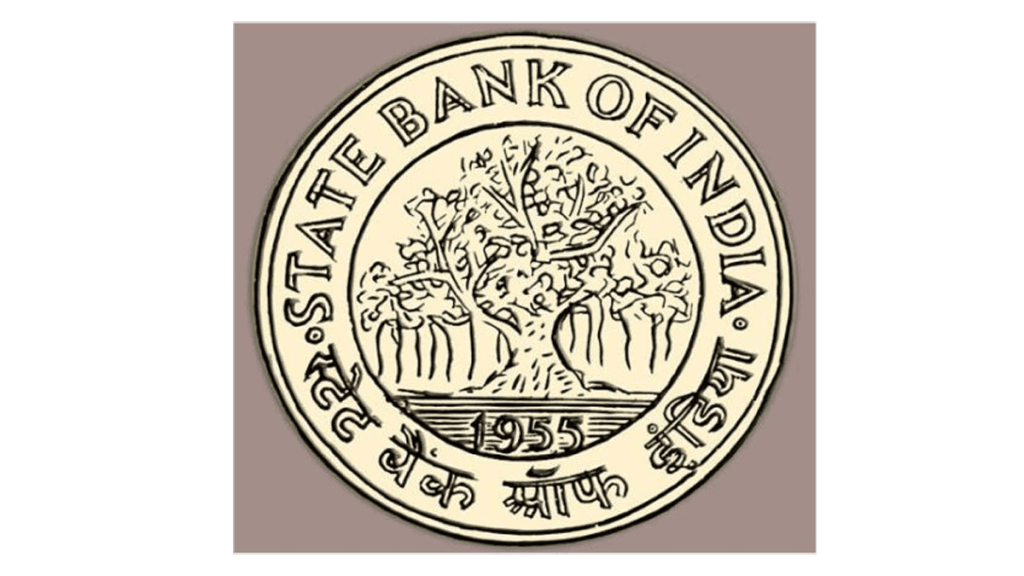
The very first logo of SBI was introduced in its founding year 1955. It comprises a detailed image of a Tree symbolizing growth, success, and well-being. The primary of using a tree image on the logo is to portray the objective and approach of the bank toward common people. Along with the tree, a detailed image of ‘1955’ was also marked under it. The logo was first featured in the double-outlined golden coin with the wordmark in Latin and Indian Alphabet (Hindi). This logo symbolizes SBI for 15 years from the year 1955 to 1970.
1970-2017
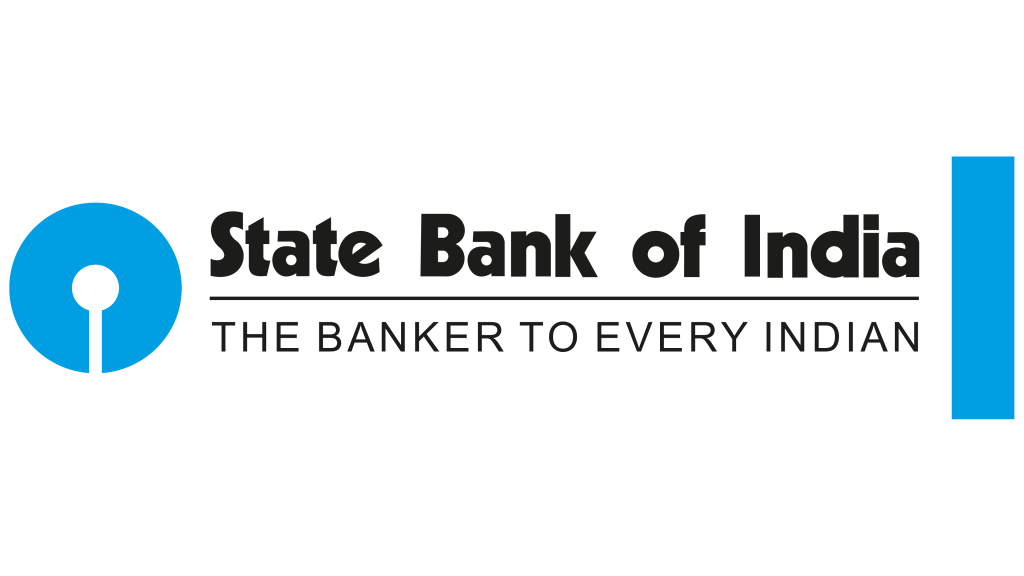
After 15 years of symbolizing the SBI logo comprising through a tree, the year 1970 witnessed a complete transformation in its design, color, and style. A new logo of SBI symbolized through a keyhole. The new design features a bold light blue emblem with a vertical white element at the bottom, resembling a keyhole or stylized tree reflecting the strength and security of the bank.
It can be used alone or placed alongside the wordmark. The wordmark is divided into two levels, with the brand name in a modern sans-serif font and the tagline “The Banker To Every Indian” in capitalized lightweight font with spacing. This logo was designed by Shekher Kamat in 1970. However, some also interpret the white circle as the bank’s branch and the vertical line stands for the streets and lanes of any city which leads to the bank’s branch reflecting that wherever one goes, the SBI is there to serve. Previously, it was claimed that the blue circle with a small cut at the bottom of the SBI logo is likely to be inspired by Kankaria Lake (Ahmedabad) which resembles this on Google Maps.
2017- Present
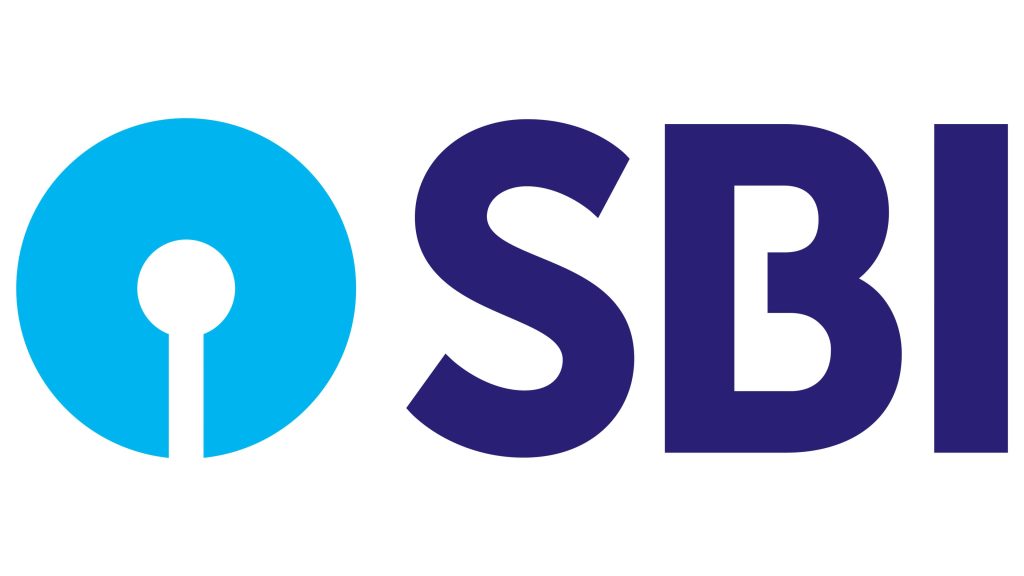
In 2017, the bank’s logo was simplified with a dark purple “SBI” abbreviation. The new logo had a blue and purple color palette, symbolizing reliability, stability, and creativity. The wordmark featured bold, clean lettering in a simple sans-serif font, with a shortened horizontal bar in the letter “B” for added elegance and uniqueness.
Facts to Understand SBI a Little Better
- There are a total of 28802 SBI Branches across the country including 28 states and 8 Union Territories and around 233 branches overseas as recorded in their 2020 annual report.
- During the 1960s India witnessed a huge Industrial Revolution, where SBI plays the role of a catalyst by helping various industries like iron and steel to elevate in the wave of this revolution.
- Similarly, during the Green Revolution in the 1970s, SBI provided loans and agricultural training to farmers making that revolution a triumph.
- SBI is the 5th biggest company in India that possesses more than 2,50,000 employees across the globe.
- The establishment of SBI in the year 1955 is an output of the merger of 20 national banks with the Imperial Bank of India. After it, the Government authorities purchased 60% of its stakes and renamed it “The State Bank of India”.
- According to research done in 2018, the number of saving bank accounts in SBI in India is more than 4 crores.
- SBI is the 43rd biggest financial institution among the Global Economic Horizons and holds 221st rank in the 2020 Fortune Global Listing of the world’s biggest companies.
- The very first subsidiary of SBI is the State Bank of Hyderabad established in October 1959.
- Dr. John Mathai was the first chairman of SBI appointed by the former Prime Minister Dr. Jawaharlal Nehru. He also served as a Finance Minister of India from the year 1948 to 1950.
- The current chairman Mr Dinesh Kumar Khara is the 26th Chairman of SBI serving since October 2020.
The above mentioned facts can also help you in preparing for your Banking awareness section of the Bank PO Exam.
Experts Tip: To enhance your general awareness section and evaluate your progress, try attempting General awareness quizzes for free.
SBI Non-Banking Subsidiaries
SBI not only provides banking services but also through its joint venture or non-banking subsidiaries it is trying to make its presence felt abroad and expand its dimensions in other fields. Some non-banking subsidiaries of SBI are:
- SBI LIFE INSURANCE COMPANY LIMITED (SBI-LIFE)
- SBI GENERAL INSURANCE COMPANY LIMITED (SBI GENERAL)
- SBI CARDS AND PAYMENT SERVICES LIMITED (SBICPSL)
- SBI FUNDS MANAGEMENT LIMITED(SBIFML)
- SBI CAPITAL MARKETS LIMITED (SBICAPS)
- SBICAP Securities Ltd (SSL)
- SBICAP Ventures Limited (SVL)
- SBICAP TRUSTEE COMPANY LIMITED (STCL)
- SBI SG GLOBAL SECURITIES SERVICES PRIVATE LIMITED (SBI-SG)
- SBI DFHI LIMITED (SBI DFHI)
- SBI Payment Services Pvt Ltd. (SBI Payments)
- SBI GLOBAL FACTORS LIMITED (SBIGFL)
- SBIPENSION FUNDS PRIVATE LIMITED
The SBI also has some joint ventures with other countries which are mentioned below:
- Nepal SBI Bank Ltd (SBI, EPFO, and Agricultural Development Bank of Nepal)
- C-Edge Technologies Ltd ( TCS and SBI)
- Bank- SBI Botswana Ltd or BSBIBL (India and Botswana)
- Commercial Indo Bank LLC or CCIBL (India and Russia)
Now you must have had enough information about SBI from a general and examination perspective both. However,the best part is, whether you are a Bank exam aspirant or not, this information is not going to be wasted. This information is apt for a trivia curious as well as for a bank exam aspirant. The Bank PO exams are round the corner and you have to pull up your socks and start an overall preparation. Make a routine, attempt free mock tests to analyze your preparation level and you will be fully prepared by the exam date.
SBI Exams
If you want to work with the SBI as a Bank PO/Bank Clerk, you will have to clear the recruitment exam conducted annually. For this, we strongly advise you to begin your preparation right away. You can take a look at the online combined course for all bank clerk and PO exams to understand how you can prepare for the exam. Moreover, this course will also help you prepare for other Bank PO/Bank Clerk exams as well all at the same time.
Conclusion
In conclusion, this introductory guide provided a comprehensive overview of SBI, covering its functions, history, logo, and other important details. Hence, you can refer to this blog to enhance your banking awareness section for the Bank PO Exam. At ixamBee, we believe in providing the best and most accurate knowledge about every relevant topic. Stay tuned for more informative blogs.
To help you prepare 50% faster for competitive exams, ixamBee provides free Mock Test Series and all the Current Affairs in English and Current Affairs in Hindi in the BeePedia capsules for GA Preparation. You can also get the latest updates for Bank PO, Bank Clerk, SSC, RBI Grade B, NABARD, and Other Government Jobs.











Sbi revisyeted head office at kolkatta however corporate office at mumai
yes you are right Ravindra but the article talk about SBI headquarter which is in Mumbai not its head office. It has its headoffice in various cities.